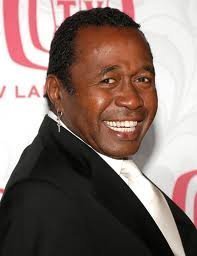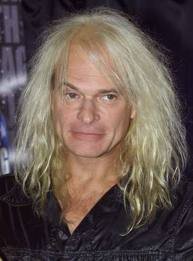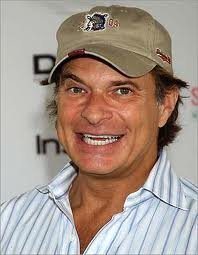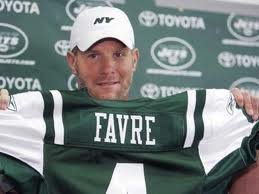Cosmetology (from Greek κοσμητικός, kosmētikos, "beautifying"; and -λογία, -logia) is the study and application of beauty treatment. Branches of specialty include hairstyling, skin care, cosmetics, manicures/pedicures, non-permanent hair removal such as waxing and sugaring, and permanent hair removal processes such as electrology and intense pulsed light (IPL).
In the United States as of 2018, an occupational license is required in all states to be a cosmetologist, with the average cost of a certificate from a for-profit school being $17,000 and 1,500 required hours (ten times the hours required for an EMT) with cosmetologists making a median wage of $25,000.
Cosmetology specialties
Cosmetologist
Cosmetologists are trained and licensed to perform cosmetic treatments to the hair, skin, and nails. This can be expanded into multiple parts including cutting and chemically treating hair, chemical hair removal, fashion trends, wigs, nails and skin care, skin and hair analysis; relaxation techniques including head, neck, scalp, hand and feet basic massage and aroma therapies; plus ability to expertly apply makeup applications to cover up dark spots or promote and can expand into further specialties such as reflexology; theatrical applications; cosmetics and others as listed below.
Hair color specialist
A hair color specialist, or hair colorist, specializes in the modification of natural hair color utilizing various application methods while using a colorant product from a professional company. In the US, some colorists are qualified through the American Board of Certified Hair Colorists. This designation is used to recognize colorists that have a greater level of competency in the industry through a written exam and a practical exam. A hair color specialist's duties might include, but are not limited to, basic color applications, like covering grey, and lightening or darkening natural hair color. A color specialist is also able to perform corrective color applications and create special effects using foiling techniques or any other advanced color application methods.
Shampoo technician
A shampoo technician shampoos and conditions a client's hair in preparation for the hair stylist. This is generally an apprentice position and a first step for many just out of cosmetology school.
Aesthetician
Aestheticians are licensed professionals who are experts in maintaining and improving skin. An aesthetician's general scope of practice is limited to the epidermis (the outer layer of skin). Aestheticians work in many different environments such as salons, medi-spas, day spas, skin care clinics, and private practices. Aestheticians may also specialize in treatments such as microdermabrasion, microcurrent (also known as non-surgical "face lifts"), cosmetic electrotherapy treatments (galvanic current, high frequency), LED (light-emitting diode) treatments, ultrasound/ultrasonic (low level), and mechanical massage (vacuum and G8 muscle vibrating).
An aesthetician may undergo special training for treatments such as laser hair removal, permanent makeup application, light chemical peels, eyelash extensions, microblading, and electrology. In the US, aestheticians must be licensed in the state in which they are working and are governed by the cosmetology board requirements of that state. Aestheticians must complete a minimum 260–1500 hours of training and pass both a written and hands-on exam in order to be licensed in a given state. Utah, Virginia and Washington are the only states at this time to adopt the Master Esthetician License. Additional post graduate training is sometimes required when specializing in areas such as medical esthetics (working in a doctor's office). Aestheticians work under a dermatologist's supervision only when employed by the dermatologist's practice. Aestheticians treat a wide variety of skin issues that are cosmetic in nature, such as mild acne, hyperpigmentation, and aging skin; therefore, clients with skin disease and disorders are referred to a dermatologist or other medical professional. Aestheticians are also referred to as beauticians within North America.
If you want to read a whole lot more, go here: https://en.wikipedia.org/wiki/Cosmetology#Esthetician
- 2 (6-ounce) packages macaroni and cheese
- 5 tablespoons butter, melted
- 1/2 teaspoon dry mustard
- 3 eggs, beaten
- 2 cups shredded cheddar cheese, divided
- 4 hot dogs, cut into 1/2-inch slices (see Note)
- Preheat oven to 350 º. Coat a 9- x 5-inch loaf pan with cooking spray.
- Cook macaroni according to package directions; drain and return to pot. Add butter, the cheese packets, and mustard; mix until thoroughly combined. Stir in eggs and 1-1/2 cups cheese; mix well. Stir in hot dog slices. Spoon mixture into loaf pan.
- Bake 35 minutes, then sprinkle with remaining 1/2 cup cheese. Continue baking 15 minutes, or until golden. Let sit 10 minutes, then slice and serve immediately.
If using jumbo hot dogs, you'll only need 3.
***I would think you could use cooked bacon instead of the hot dogs.

Annually, World Mental Health Day on October 10th raises awareness and mobilizes efforts to support mental health.
Mental health is a hot topic. This is good news. It means the stigma for mental health issues is slowly going away. Mental health issues are finally getting the attention they deserve. Healthcare workers and individuals feel they can discuss mental health more openly. However, that doesn’t mean there isn’t still work to do, however.
As a whole, we often misunderstand mental health because it is hard to define. Additionally, mental health includes several areas. These areas involve one’s social, emotional, and psychological well-being. Mental health affects thoughts, feelings, and actions. When we have positive mental health, we handle stress better, our productivity remains stable, and we realize our full potential.
When one has poor mental health, they are more likely to suffer from a mental health disorder. These disorders include the following diagnoses:
- Depression
- Generalized Anxiety Disorder (GAD)
- Panic disorder
- Phobias
- Social Anxiety Disorder (SAD)
- Obsessive-compulsive Disorder (OCD)
- Post-traumatic Stress Disorder (PTSD)
Of these mental health disorders, most people experience anxiety disorders. Statistics show that about 4% of the world’s population has a form of anxiety disorder. In the United States, the percentage increases to just over 18% of the population.
Some people are at a higher risk of getting a mental health disorder. These include those with high-stress levels, those who have experienced trauma, and those who have few healthy relationships. However, family history plays a role in higher risk factors, too.
Thanks to increased awareness and increased funding for research, there are effective treatment options for most mental health disorders. Conventional treatment methods include medication, psychotherapy, and hospital and residential programs.
While not everyone faces a life with mental health issues, mental health impacts all of us. That’s why discussing mental health with your loved ones is a vital part of this observance.
The World Federation for Mental Health organizes World Mental Health Day. Each year, organizations host a variety of events all around the world to increase awareness about mental health issues. Events include educational seminars, free mental health screenings, walk-a-thons, marathons, conferences, mass media promotions, and public service announcements.
If you know someone who struggles with a mental health disorder, World Mental Health Day is a great way to reach out to them. While many people don’t feel comfortable talking to others about their diagnosis, knowing they have someone to reach out to makes a real difference. You can also donate to an organization that advocates for mental health. A few include the National Alliance on Mental Health (NAMI) and the Brain and Behavior Research Foundation. If you think you might have a mental health disorder or are at a high risk of getting one, schedule an appointment with your doctor.
- 2019: Working Together to Prevent Suicide
- 2018: Young People and Mental Health
- 2017: Mental Health in the Workplace
- 2016: Psychological and Mental Health First Aid

















